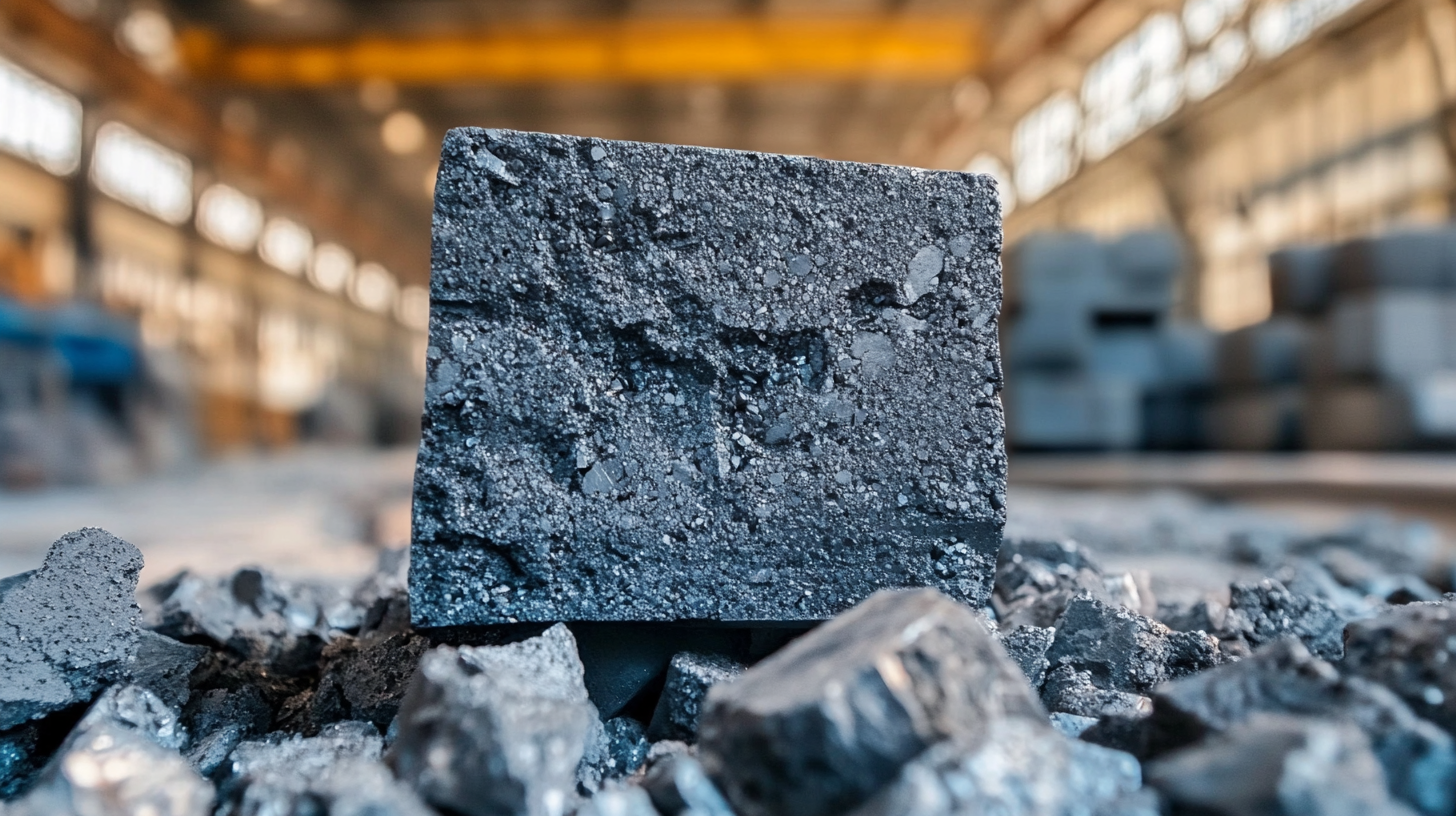Leave Your Message
In the face of escalating tariffs and trade tensions between the United States and China, the resilience of Chinese manufacturing has become increasingly evident, particularly in the realm of advanced materials. Notably, the market for Sintered Silicon Carbide is thriving, showcasing a robust demand driven by its unique properties such as high thermal conductivity, excellent wear resistance, and mechanical strength. According to a recent industry report by MarketsandMarkets, the global silicon carbide market is projected to reach $7.18 billion by 2025, growing at a CAGR of 16.2% from 2020. This underscores not only the significance of Sintered Silicon Carbide in various applications, including electronics and automotive sectors, but also highlights the ability of Chinese manufacturers to adapt and innovate in challenging geopolitical landscapes. As resilience becomes a pivotal theme, it is essential to explore how Chinese firms are navigating these tariff challenges while maintaining a competitive edge in the high-performance materials sector.

In the face of escalating tariffs and trade tensions, Chinese manufacturing has showcased remarkable resilience, particularly in sectors like sintered silicon carbide. This advanced material, widely used in high-performance applications ranging from electronics to automotive components, has adapted to the challenges posed by U.S. tariffs. Manufacturers have innovated in their processes, optimized supply chains, and focused on enhancing product quality in response to shifting market dynamics.
One key strategy has been the diversification of markets. Chinese companies are increasingly exploring opportunities in other regions, reducing their dependence on the U.S. market. This shift not only mitigates the impact of tariffs but also opens new avenues for growth. Additionally, the push toward technological advancements has led to improvements in production efficiency and cost management, ensuring that Chinese manufacturers remain competitive despite external pressures. By leveraging their adaptability and commitment to innovation, the sintered silicon carbide industry exemplifies how resilience can turn challenges into opportunities in the global market.

The emergence of sintered silicon carbide (SiC) as a leading material in Chinese manufacturing highlights a remarkable case of innovation amidst external challenges. Characterized by its exceptional hardness, thermal conductivity, and resistance to corrosion, SiC is being embraced across various industries, from aerospace to automotive. In light of ongoing US-China tariff issues, manufacturers have pivoted, leveraging innovation as a driving force to not only enhance their product offerings but also to maintain a competitive edge in the global marketplace.
Tips for leveraging innovation in manufacturing include fostering a culture of continuous improvement and encouraging cross-disciplinary collaborations. By investing in research and development, companies can uncover unique applications for SiC, pushing boundaries beyond traditional uses. Additionally, staying informed about emerging technologies allows manufacturers to anticipate market trends and adapt accordingly, ensuring they remain at the forefront of their industries.
Moreover, seeking partnerships with educational institutions can serve as a catalyst for innovation. By collaborating on research projects and internships, manufacturers can harness fresh ideas and perspectives that might lead to breakthroughs in the application of sintered silicon carbide. This synergy between industry and academia not only enhances creativity but also strengthens the workforce, ultimately driving progress in Chinese manufacturing amidst a complex global landscape.

Chinese manufacturers have displayed remarkable resilience in the face of immense challenges posed by US-China trade tariffs, particularly in the realm of producing sintered silicon carbide. Amidst these trade barriers, companies have adopted several strategic approaches to maintain their competitive edge. One of the primary strategies has been the investment in advanced production technologies. By enhancing their manufacturing processes and integrating automation, these firms not only improve efficiency but also elevate product quality, thereby catering to the increasing demand for high-performance materials in various industries.
Moreover, Chinese manufacturers have pursued diversification of their supply chains to mitigate the impact of tariffs. By sourcing raw materials from domestic suppliers or exploring alternative markets, they can reduce reliance on imports that are vulnerable to tariff increases. Additionally, forging strategic alliances and partnerships with foreign firms enables them to expand their market reach while sharing resources and expertise. This collaborative approach not only helps in navigating trade barriers but also fosters innovation and enhances their overall market resilience.
The demand for advanced materials, particularly in the realm of sintered silicon carbide (SiC), is witnessing significant growth, even amidst the ongoing complexities posed by US-China tariffs. The global silicon carbide market is projected to reach approximately $4 billion by 2026, expanding at a compound annual growth rate (CAGR) of around 14%, according to a recent report from ResearchAndMarkets. This robust growth is largely driven by the increasing applications of SiC in sectors such as automotive, aerospace, and electronics, where its unique properties—high thermal conductivity, hardness, and resistance to thermal shock—make it an invaluable material.
**Tips:** When considering investments in advanced materials, businesses should focus on supply chain resilience. Partnering with local sources and diversifying material inputs can help mitigate risks associated with geopolitical tensions. Additionally, staying informed about technological advancements in material science can position companies to leverage new opportunities in markets showing rapid growth.
Moreover, manufacturers are adapting their strategies to meet the evolving market needs. They are increasingly investing in R&D to innovate and enhance the performance of sintered silicon carbide products. The shift towards sustainable manufacturing practices also plays a crucial role, as companies aim to reduce their carbon footprints while maintaining product efficiency. With these dynamics, the landscape for advanced materials remains bright and full of potential for future investments.
**Tips:** Companies should prioritize sustainable practices not only for compliance but also to cater to a growing consumer base that values environmental responsibility. Implementing green technologies can lead to cost savings and improved brand reputation in a competitive market.
The ongoing trade tensions between the US and China have posed significant challenges for the manufacturing sectors in both countries. However, the resilience exhibited by Chinese manufacturers, particularly in the field of advanced materials like sintered silicon carbide, is noteworthy. This innovative ceramic, known for its exceptional hardness and thermal stability, has emerged as a key component in various industries, including electronics and automotive. As tariffs continue to disrupt traditional trade flows, Chinese manufacturers are adapting by optimizing their production processes and sourcing strategies to maintain competitive pricing and quality.
Furthermore, the situation presents an opportunity for China to strengthen its domestic supply chains and invest in research and development. By focusing on innovation, Chinese manufacturers can not only combat the immediate effects of tariffs but also position themselves as leaders in the global market. The shift toward self-reliance in crucial materials will likely enhance China's manufacturing base, making it more robust against future trade disputes. As companies adapt and evolve, the future of Chinese manufacturing remains promising, showcasing an impressive capability to navigate and thrive amidst adversity.
The chart below illustrates the market share distribution among leading sintered silicon carbide producers in 2023. Despite ongoing US-China trade tensions, Chinese manufacturers are successfully maintaining a competitive position in the global market.
